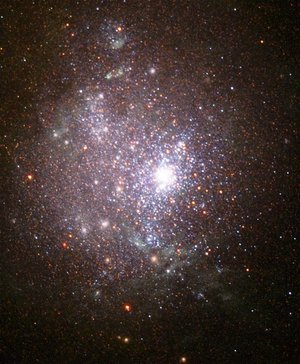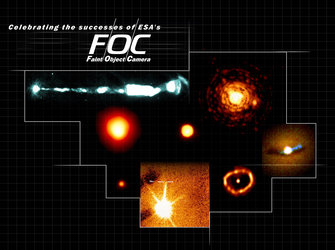Hubble assists Rosetta comet mission
Last year, the NASA/ESA Hubble Space Telescope played a major role in preparing ESA’s ambitious Rosetta mission for its target, Comet 67P/Churyumov-Gerasimenko.
The NASA/ESA Hubble Space Telescope was used to make precise measurements of the size, shape and rotational period of the comet. This information is essential if Rosetta is to rendezvous with the comet and then drop down a probe. This has never been attempted before and is a major step towards understanding the origins of the Solar System.
Observations made by Hubble in 2003 revealed that Comet 67P/Churyumov-Gerasimenko is approximately five kilometres by three kilometres in size and shaped like a rugby ball. ESA mission scientists were concerned about the exact size of the solid nucleus, which is needed to adapt the mission to the comet’s gravity.
"Although 67P/C-G is roughly three times larger than the original Rosetta target, its highly elongated shape should make landing on its nucleus feasible, now that measures are in place to adapt the lander package to the new scenario," says Dr Philippe Lamy, Laboratoire d'Astronomie Spatiale, France.
Mission scientists began looking for an alternative target when the Rosetta mission's launch date was postponed. The delay meant that the original target comet, 46P/Wirtanen, was no longer easily reachable. But scientists did not have enough information on the back-up comet, Churyumov-Gerasimenko, and sought data from the largest telescopes.
Using a technique developed over the past decade by Philippe Lamy, Imre Toth (Konkoly Observatory, Hungary) and Harold Weaver (Johns Hopkins University Applied Physics Laboratory, Laurel, USA), the team used Hubble to produce 61 images of the comet over a period of 21 hours on 11 and 12 March 2003.
Hubble's Wide Field Planetary Camera 2 isolated the comet's nucleus from the coma, the diffuse gas surrounding the nucleus, quickly providing the figures required. The telescope showed that the nucleus is ellipsoidal and measured its rotation rate at approximately 12 hours.









